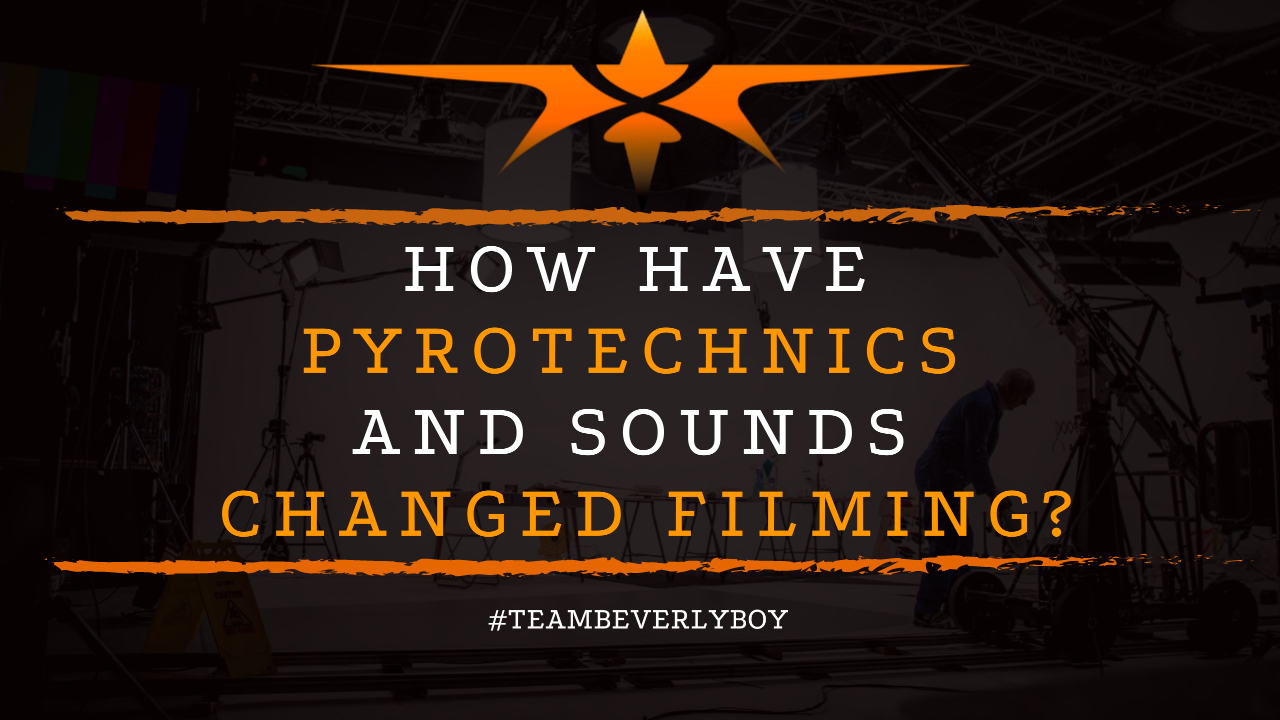
How Have Pyrotechnics and Sounds Changed Filming?
Whether it’s the explosion of a car, the combustion of a fire in a burning building, or the typical flash of fireworks seen overhead. The use of special effects including various pyrotechnics and sounds in filmmaking has actually been prominent throughout the 1900s. With a number of different techniques and tricks being used in filmmaking over the years to engage viewers. While we know pyrotechnic displays and the accompanying sounds that make them seem most realistic have certainly had their place in films and videos over the years. Do you know how pyrotechnics and sounds changed filming?

Filmmaking has certainly evolved as has the use of pyrotechnics and sounds in films. We’ve certainly come a long way from the early days of the silent film era to the presence of advanced pyrotechnics and sounds used in filmmaking today.
In examining how pyrotechnics and sounds have changed filmmaking, a key concept consistently comes up – audience experience.
Pyrotechnics and sounds have altered the way audiences engage and experience films. Special visual effects like these which use explosives or pyrotechnics have the power to attract the attention of the audience. Keeping them engaged and interested in the scene.
But, incorporating explosives onto a film set is also a dangerous practice. And blowing stuff up certainly has plenty of potential repercussions.
What are Pyrotechnics in Film?
Pyrotechnics represents a blanket term that is used to describe special effects. Which are utilized on the film set as a means of creating blasts, explosions, fireworks, or otherwise flammable compositions that are used as special effects on the film set.
Pyrotechnics may be used in filmmaking for a wide variety of effects including:
- Vehicle explosions
- Bullet hits
- Flame effects
- Structural explosions
- Walls of fire
- Campfire or barrel fires
How Have Pyrotechnics and Sounds Changed Filming?
As a primary purpose, pyrotechnics and sounds are used in filmmaking to add visual and audible value and intensity to a scene which keeps the audience deeply attracted to and engaged with the film.
These fire related effects which may include everything from a burning building to a bomb explosion, completely combustible cars to the actual appearance of fireworks, have brought great intensity to films but they have also brought great danger to film sets.
This is why not just anyone is capable of, or legally allowed to, create pyrotechnics for films. Becoming a trained pyrotechnician requires specialized training, education, and certifications which will lead to licensure that must then be renewed every one to three years.
A Small Event
Surprisingly though, pyrotechnics are not always the big and immense explosions that you see in the movies. It’s actually very common for an apparently large explosion to actually be a very small, miniature event.
One you can capture from various camera angles. And under unique circumstances so that it appears massively out of hand. Even though, it’s really not.
Safer Practices
Although pyrotechnics once involved the use of harmful gasses and old-school recipes. Which involved a mix of chemicals that were harmful to humans and posed significant threats to the environment. Today’s Hollywood pyrotechnicians are playing it much safer than ever before.
They often choose to use environmentally friendly, clean burning components that are safe for humans and for the world in which we live.
So, how have pyrotechnics and sounds changed filming? Advanced pyrotechnic technology and the associated sound effects that go along with the combustible effects involved have improved the film watching experience.
And all by making explosions, fireworks displays and other scenes more dramatic and emphasized on set resulting in greater audience reaction and engagement.


